Triggering of the cGAS-STING Pathway in Human Plasmacytoid Dendritic Cells Inhibits TLR9-Mediated IFN Production
- PMID: 32471881
- PMCID: PMC7460725
- DOI: 10.4049/jimmunol.1800933
Triggering of the cGAS-STING Pathway in Human Plasmacytoid Dendritic Cells Inhibits TLR9-Mediated IFN Production
Abstract
Plasmacytoid dendritic cells (pDCs) are potent producers of type I and type III IFNs and play a major role in antiviral immunity and autoimmune disorders. The innate sensing of nucleic acids remains the major initiating factor for IFN production by pDCs. TLR-mediated sensing of nucleic acids via endosomal pathways has been studied and documented in detail, whereas the sensing of DNA in cytosolic compartment in human pDCs remains relatively unexplored. We now demonstrate the existence and functionality of the components of cytosolic DNA-sensing pathway comprising cyclic GMP-AMP (cGAMP) synthase (cGAS) and stimulator of IFN gene (STING) in human pDCs. cGAS was initially located in the cytosolic compartment of pDCs and time-dependently colocalized with non-CpG double-stranded immunostimulatory DNA (ISD). Following the colocalization of ISD with cGAS, the downstream pathway was triggered as STING disassociated from its location at the endoplasmic reticulum. Upon direct stimulation of pDCs by STING agonist 2'3' cGAMP or dsDNA, pDC-s produced type I, and type III IFN. Moreover, we documented that cGAS-STING-mediated IFN production is mediated by nuclear translocation of IRF3 whereas TLR9-mediated activation occurs through IRF7. Our data also indicate that pDC prestimulation of cGAS-STING dampened the TLR9-mediated IFN production. Furthermore, triggering of cGAS-STING induced expression of SOCS1 and SOCS3 in pDCs, indicating a possible autoinhibitory loop that impedes IFN production by pDCs. Thus, our study indicates that the cGAS-STING pathway exists in parallel to the TLR9-mediated DNA recognition in human pDCs with cross-talk between these two pathways.
Copyright © 2020 by The American Association of Immunologists, Inc.
Figures
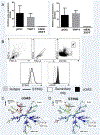
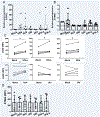

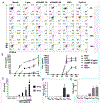
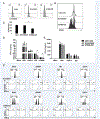
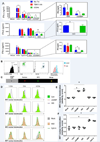
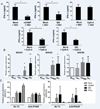
Similar articles
-
Human plasmacytoid dentritic cells elicit a Type I Interferon response by sensing DNA via the cGAS-STING signaling pathway.Eur J Immunol. 2016 Jul;46(7):1615-21. doi: 10.1002/eji.201546113. Epub 2016 May 27. Eur J Immunol. 2016. PMID: 27125983 Free PMC article.
-
Priming of the cGAS-STING-TBK1 Pathway Enhances LPS-Induced Release of Type I Interferons.Cells. 2021 Apr 1;10(4):785. doi: 10.3390/cells10040785. Cells. 2021. PMID: 33916318 Free PMC article.
-
African Swine Fever Virus Armenia/07 Virulent Strain Controls Interferon Beta Production through the cGAS-STING Pathway.J Virol. 2019 May 29;93(12):e02298-18. doi: 10.1128/JVI.02298-18. Print 2019 Jun 15. J Virol. 2019. PMID: 30918080 Free PMC article.
-
The mechanism of double-stranded DNA sensing through the cGAS-STING pathway.Cytokine Growth Factor Rev. 2014 Dec;25(6):641-8. doi: 10.1016/j.cytogfr.2014.06.006. Epub 2014 Jun 22. Cytokine Growth Factor Rev. 2014. PMID: 25007740 Free PMC article. Review.
-
cGAS/cGAMP/STING signal propagation in the tumor microenvironment: Key role for myeloid cells in antitumor immunity.Radiother Oncol. 2022 Sep;174:158-167. doi: 10.1016/j.radonc.2022.07.014. Epub 2022 Jul 20. Radiother Oncol. 2022. PMID: 35870728 Review.
Cited by
-
Plasmacytoid dendritic cells during COVID-19: Ally or adversary?Cell Rep. 2022 Jul 26;40(4):111148. doi: 10.1016/j.celrep.2022.111148. Epub 2022 Jul 14. Cell Rep. 2022. PMID: 35858624 Free PMC article. Review.
-
SARS-CoV-2 subunit vaccine adjuvants and their signaling pathways.Expert Rev Vaccines. 2022 Jan;21(1):69-81. doi: 10.1080/14760584.2021.1991794. Epub 2021 Nov 1. Expert Rev Vaccines. 2022. PMID: 34633259 Free PMC article. Review.
-
Spleen-targeted neoantigen DNA vaccine for personalized immunotherapy of hepatocellular carcinoma.EMBO Mol Med. 2023 Oct 11;15(10):e16836. doi: 10.15252/emmm.202216836. Epub 2023 Aug 8. EMBO Mol Med. 2023. PMID: 37552209 Free PMC article.
-
Interactions between the NLRP3-Dependent IL-1β and the Type I Interferon Pathways in Human Plasmacytoid Dendritic Cells.Int J Mol Sci. 2022 Oct 12;23(20):12154. doi: 10.3390/ijms232012154. Int J Mol Sci. 2022. PMID: 36293012 Free PMC article.
-
Selenium Supplementation Protects Against Lipopolysaccharide-Induced Heart Injury via Sting Pathway in Mice.Biol Trace Elem Res. 2021 May;199(5):1885-1892. doi: 10.1007/s12011-020-02295-5. Epub 2020 Jul 31. Biol Trace Elem Res. 2021. PMID: 32737811
References
-
- Siegal FP, Kadowaki N, Shodell M, Fitzgerald-Bocarsly PA, Shah K, Ho S, Antonenko S, and Liu YJ. 1999. The nature of the principal type 1 interferon-producing cells in human blood. Science 284: 1835–1837. - PubMed
-
- Izaguirre A, Barnes BJ, Amrute S, Yeow WS, Megjugorac N, Dai J, Feng D, Chung E, Pitha PM, and Fitzgerald-Bocarsly P. 2003. Comparative analysis of IRF and IFN-alpha expression in human plasmacytoid and monocyte-derived dendritic cells. J Leukoc Biol 74: 1125–1138. - PubMed
-
- Coccia EM, Severa M, Giacomini E, Monneron D, Remoli ME, Julkunen I, Cella M, Lande R, and Uze G. 2004. Viral infection and Toll-like receptor agonists induce a differential expression of type I and lambda interferons in human plasmacytoid and monocyte-derived dendritic cells. Eur J Immunol 34: 796–805. - PubMed
Publication types
MeSH terms
Substances
Grants and funding
LinkOut - more resources
Full Text Sources
Other Literature Sources
Research Materials

